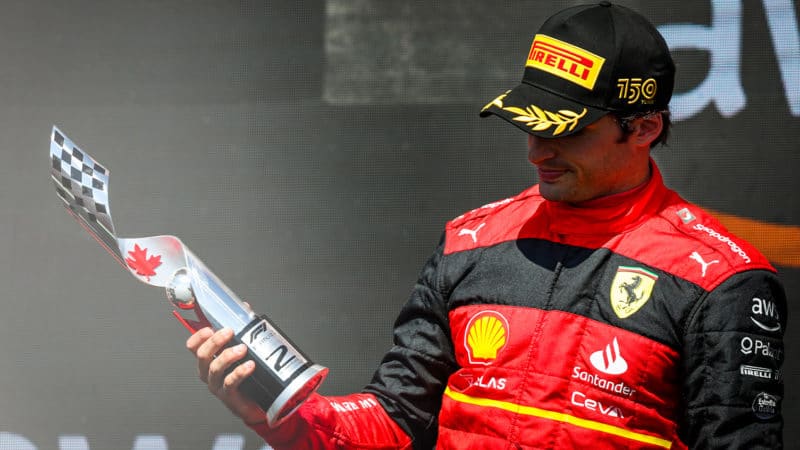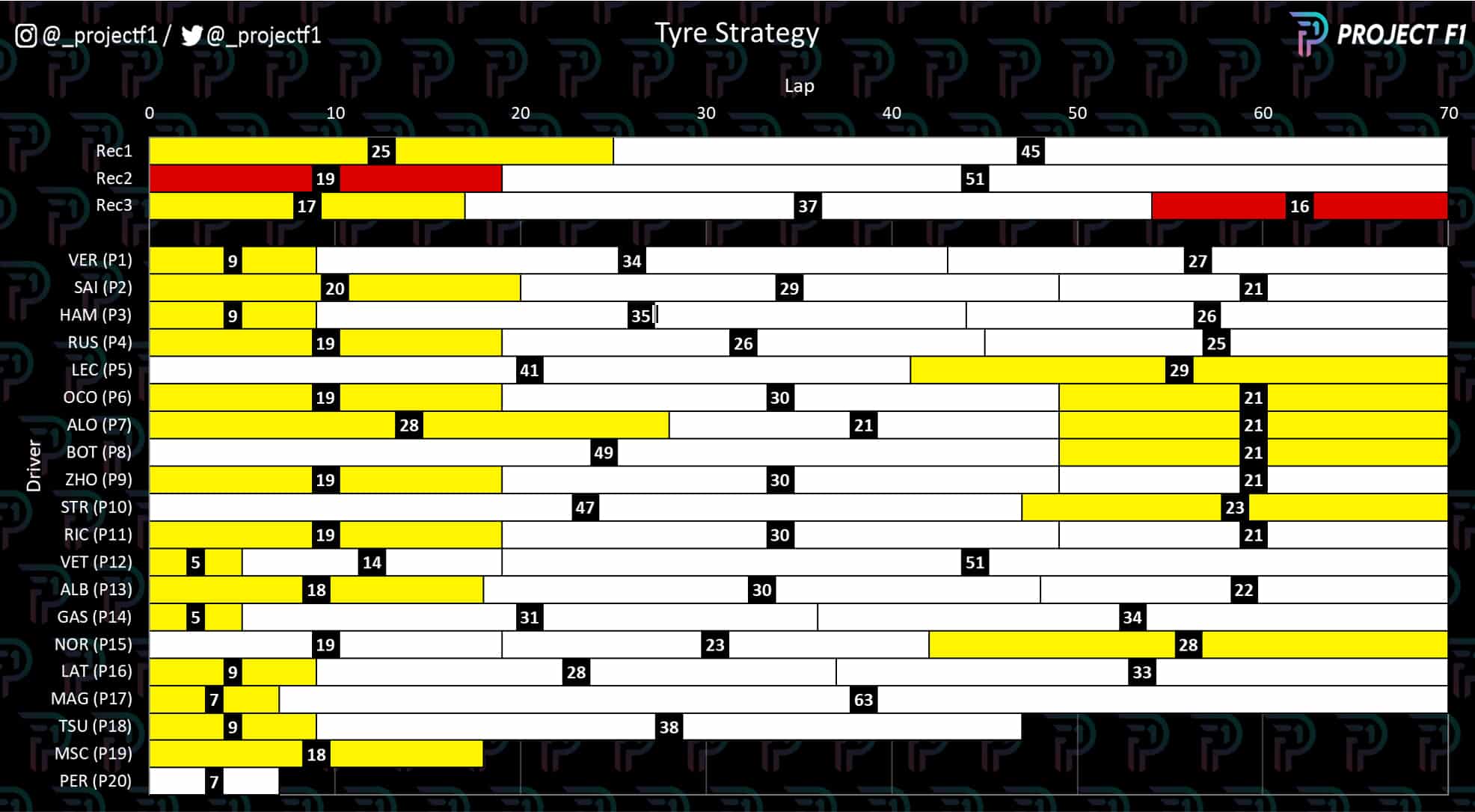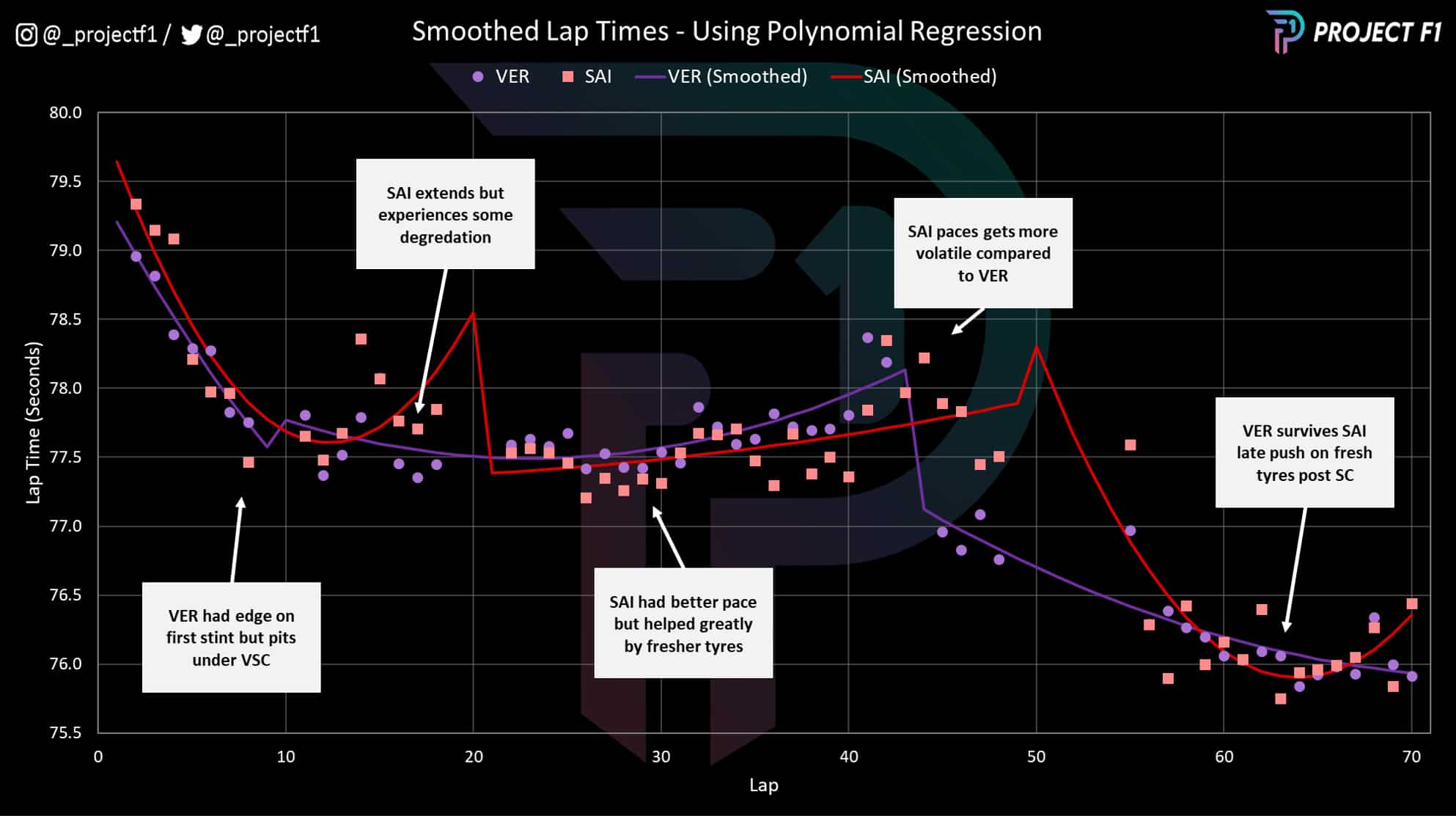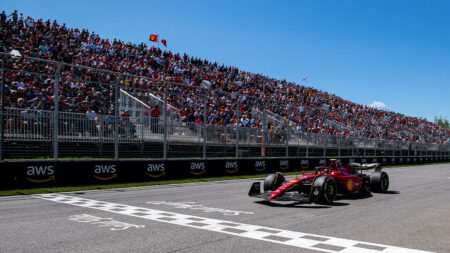Verstappen pitted on lap 43 for another set of hard tyres to make the charge back against Sainz. At this point Ferrari had to decide on either the one-stop or two-stop strategy route. One thing pushing against a pitstop was the risk of falling behind George Russell when Sainz returned to the track. The other was the fact that Sainz had tyres that were 11 laps fresher. At the very least this would afford a chance to observe the situation rather than needing to respond immediately.
Sainz upped the pace on laps 47 and 48, limiting the damage from Verstappen’s early push on the new hard tyre to just over half a second a lap. With track position and continued strong pace, Sainz was still on for the win.
But on lap 49 Tsunoda would get carefree and put the car into the wall outside of Turn 2 and trigger a full course safety car. Ferrari had little option but to pit Sainz, given that the field would close up and leave the Spaniard vulnerable to a fresher-tyred Verstappen.
So Sainz pitted with minimal time loss. Although he lost the lead, he remained second and, thanks to the safety car, right underneath Verstappen’s rear wing.
Now it was Sainz with the fresher (by six laps) tyres, with about a third of the Grand Prix to go and still no challenge from team-mate Leclerc who had become bogged down in traffic on two occasions – the first against Ocon when struggling with rear traction and the second against the Stroll train due to a slow pitstop. This was still Sainz’s best opportunity for a win so far.
Chart 4: Sector Times Compared, Sainz vs. Verstappen
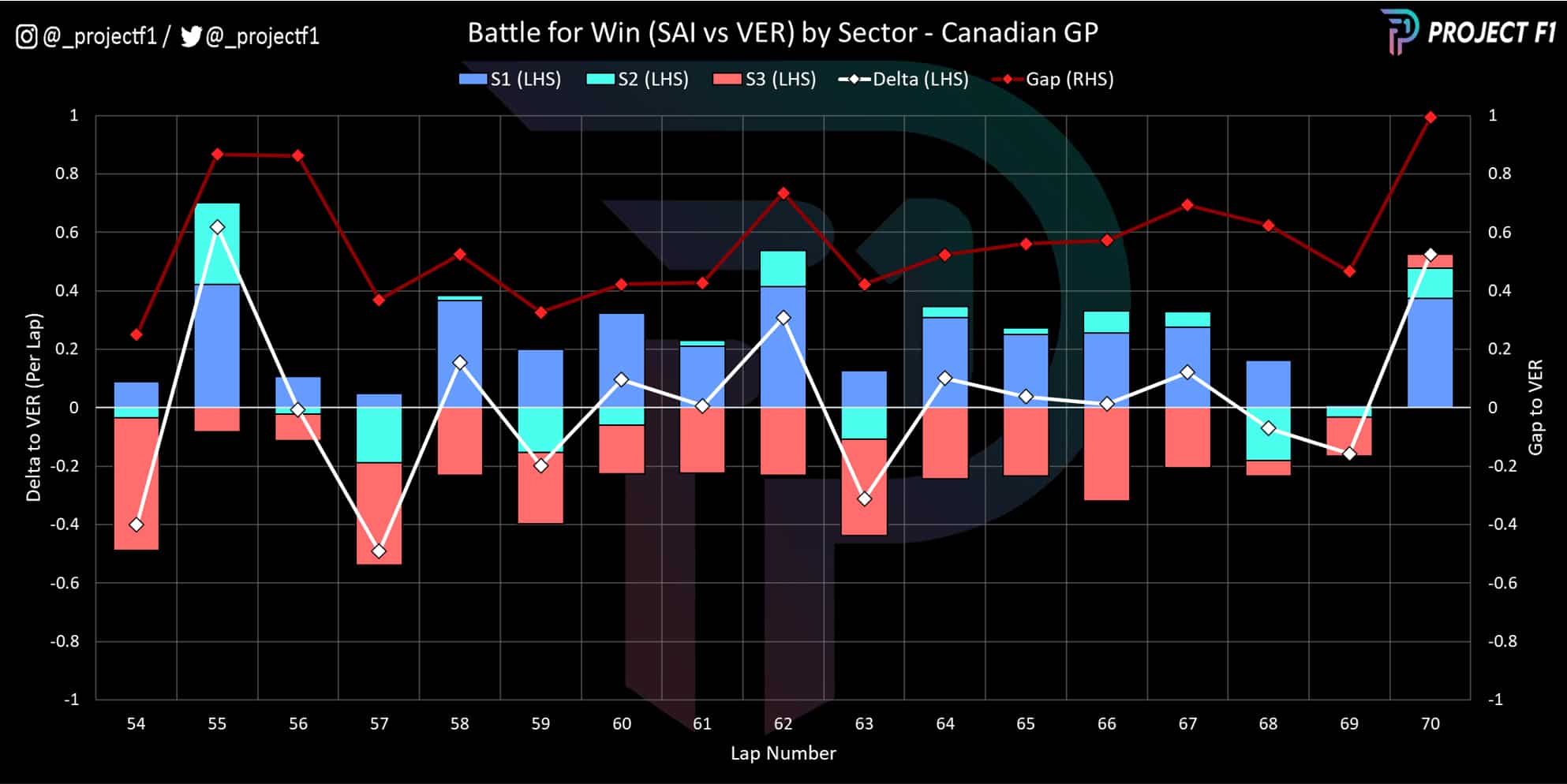
The battle was on and Chart 4 illustrates how it played out, sector by sector for each of the final 16 laps, with Sainz’s lap time delta to Verstappen (the white line) and the overall gap between the cars (red line).
Sainz was rarely more than 0.6sec behind the Red Bull, and within DRS range for most of the stint. This helped him to gain around 0.2sec on Verstappen, largely in the two DRS zones of sector 3. However, Verstappen was able to claw the majority of this back through sector 1, with the performance in sector 2 flip-flopping about.
If he was going to win, Sainz needed to do more and gain enough over a lap to be a meaningful threat to Verstappen on any series of consecutive laps. As it was, he was never closer than on lap 54 — after which Verstappen immediately responded.
Chart 5: Race Pace Distributions
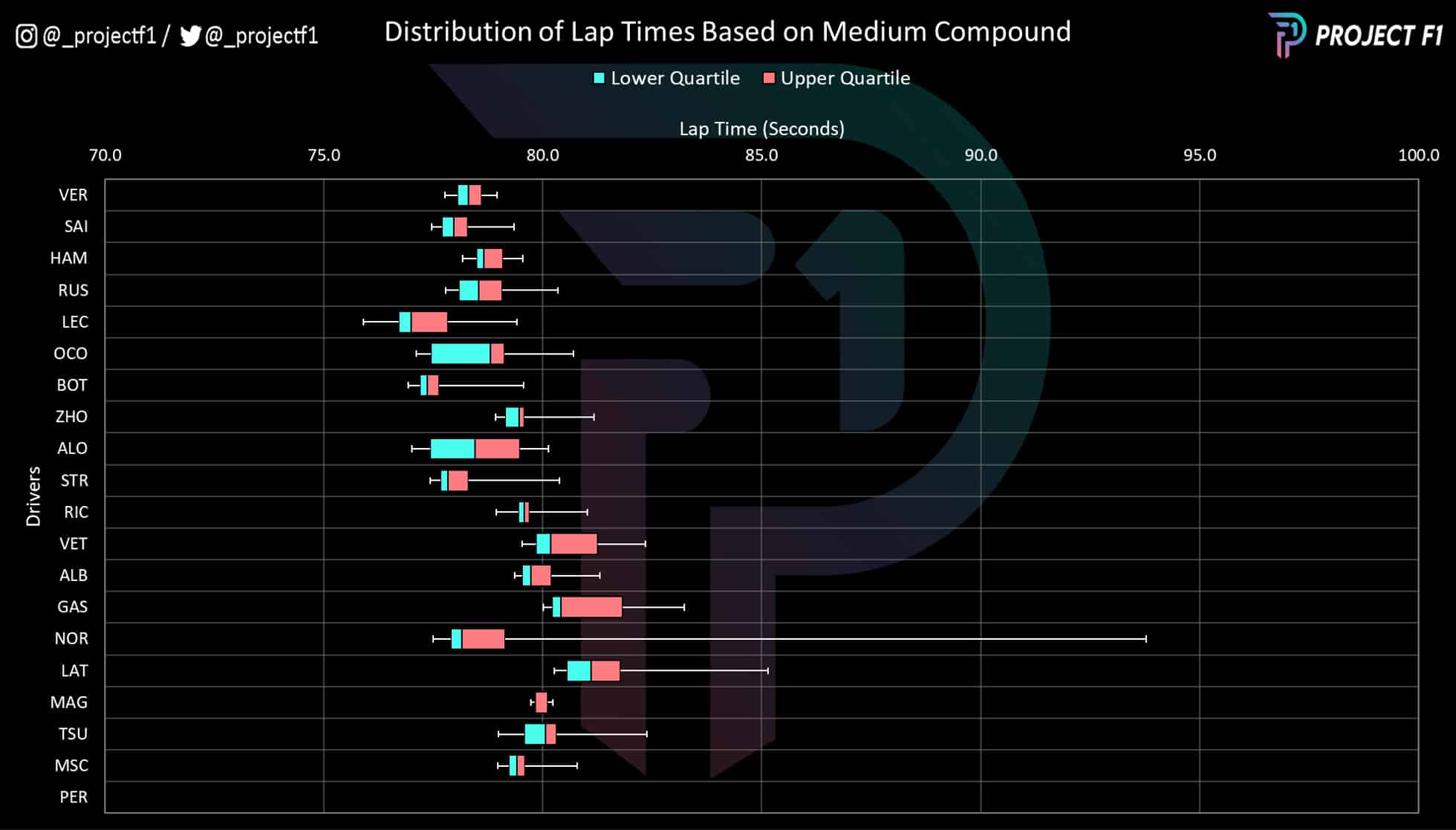
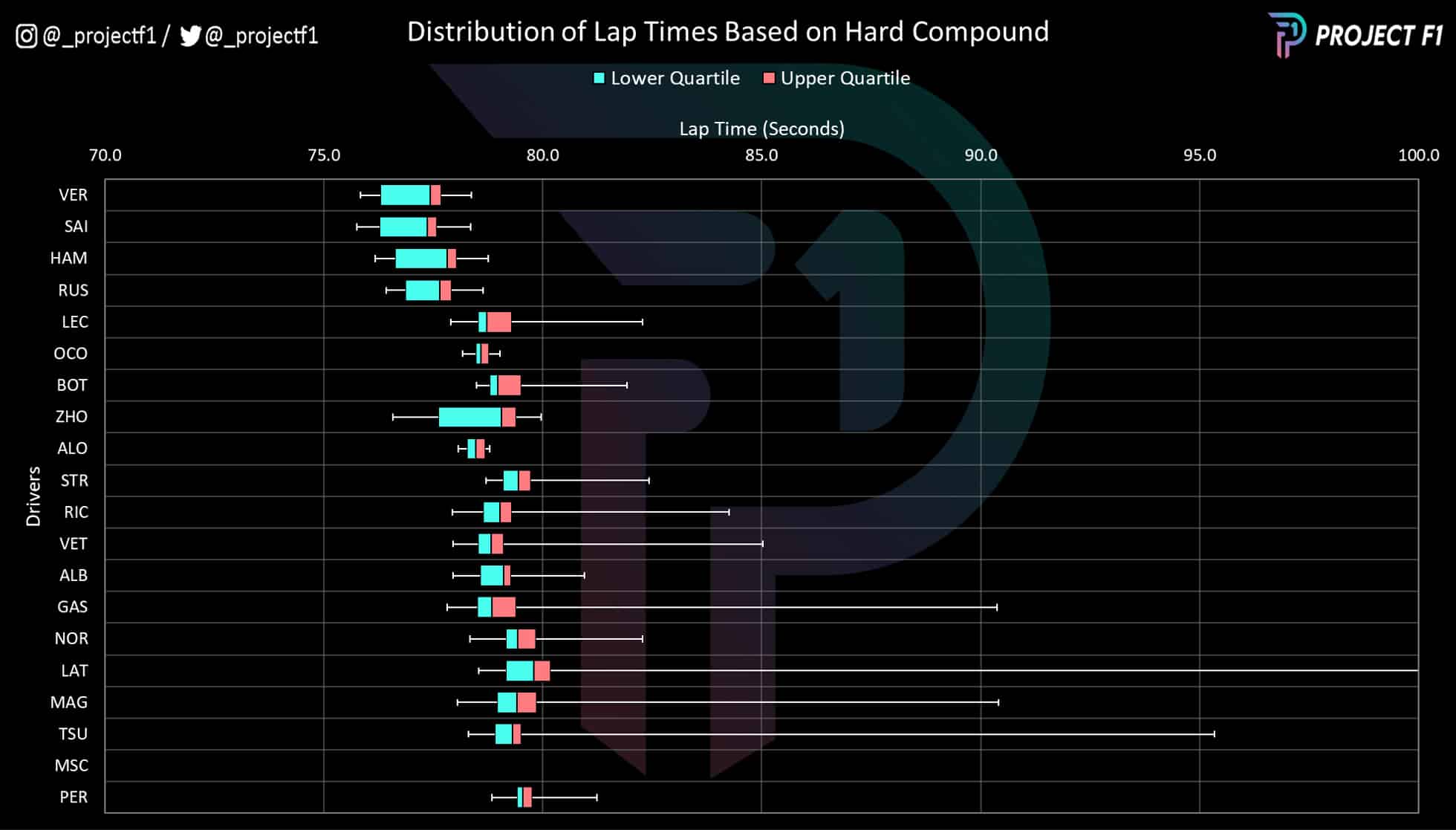
Looking at the data alone, Sainz had better race pace on both the medium and hard compound tyre, as shown in the graphs above which plot the range of lap times recorded on each tyre (the white line), as well as the lower and upper quartiles, representing the mid-range lap times.
An advantage for Sainz has not been a common trend for the 2022 season so far and is a step in the right direction for the Spaniard, but bear in mind that this chart misses the crucial context of the safety cars and how the hard tyre performance is significantly influenced by his shorter stint duration.
So despite having the better pace and better fortune through safety cars, Sainz was still not able to topple Verstappen and take the maiden win that he arguably should have been able to.
However, don’t underestimate the challenge of fighting the world champion: Verstappen delivered a faultless weekend and overcame all challenges to take another win for his 2022 campaign.
Project F1 turns data into graphics that uncover race pace and strategy
See more analysis at @_ProjectF1 on Twitter or @_ProjectF1 on Instagram
